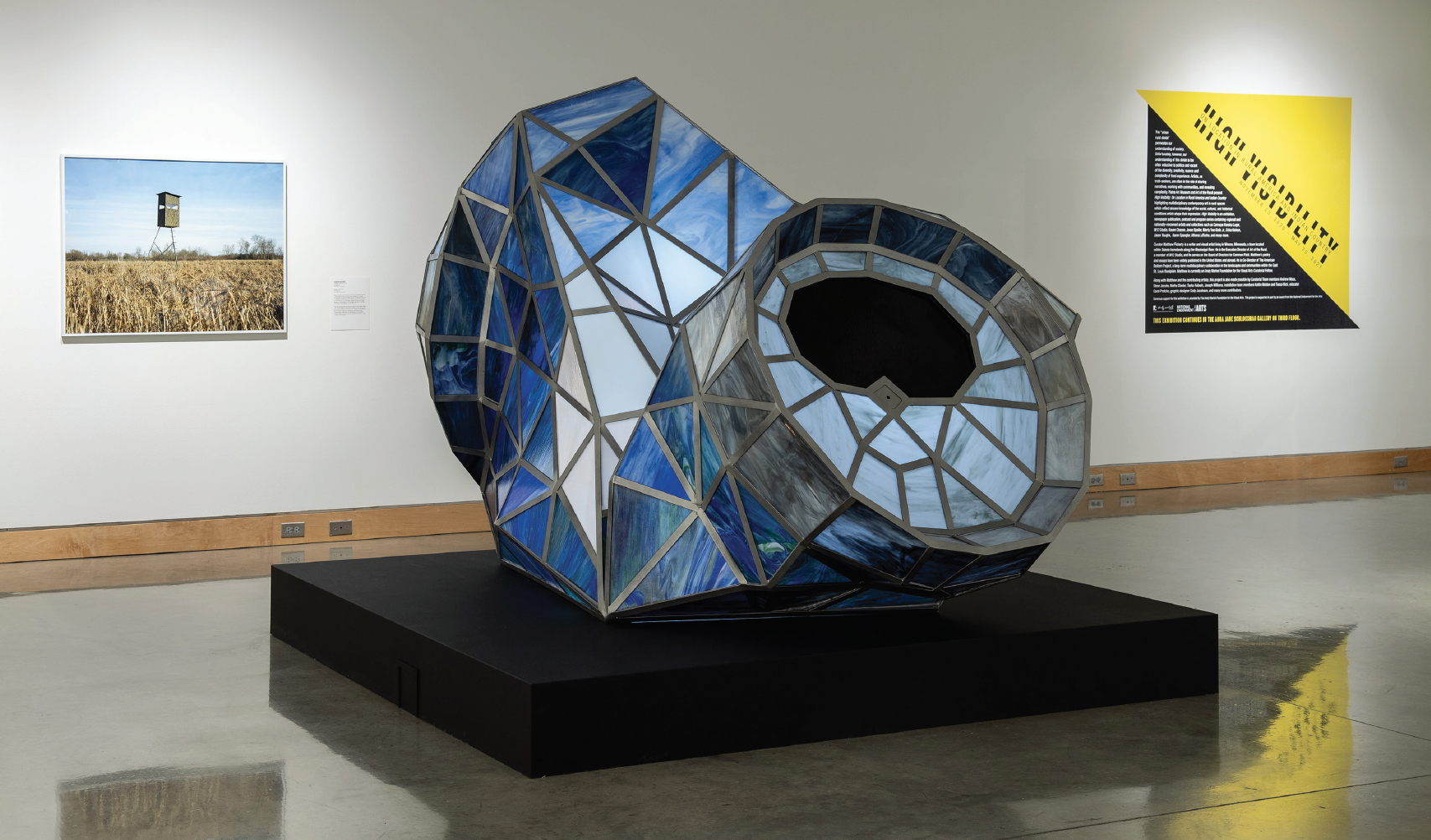Karl Unnasch:
Husk, 2020Installation view Plains Art Museum
stained glass, metal
courtesy of the artist
resources:
artist site
“The Venerate Outpost,” Mark Brown, Musuem Confidential
“Karl Unnasch's latest public-art project in Boston uses his extensive stained-glass expertise to illuminate discarded machinery,” Gabriela Iacovano, UrbanGlass
“Cornfield Cathedral: Seeing Karl Unnasch's Grand Masticator,” Aaron Dysart, MnArtists

From his home and studio in Pilot Mound, Minnesota, Karl Unnasch creates public works, often incorporating stained glass, wood, metal and other materials. Through placing rural narratives within the ecological, social, and historical traditions of each site, the artist creates structures with playful, nostalgic, and often provocative allusions. While many contemporary artists have incorporated vernacular elements of their lived, rural experience into their creative vision, few produce work that so subtly upends cultural expectations of subject matter and form.
The depth of these crosscurrents can be seen in his recent Slumgullion (The Venerate Outpost) on the grounds of the Philbrook Museum of Art in Tulsa, Oklahoma -- a reconstruction of a late-1800’s log cabin Unnasch found in rural Wisconsin. This colorful composition of stained glass, logs, and other materials both honors and challenges common associations with the image of the log cabin.
“The American ‘log cabin’ offers a stack of associations,” Unnasch writes. “It has served as a home in which to spend a lifetime, as a temporary dwelling for laborers, and as a getaway from urban chaos. It has stood as a symbol of rural gumption, nationalistic pride, abject poverty, political clout and colonial incursion.
In Husk, Karl Unnasch brings these lines of inquiry to one of the most widespread talismans of rural experience, one often only known to those who have lived beyond the city -- Busch Light cans littered in roadside ditches and fields. Unnasch’s attention to this object and its material and symbolic dimensions transports it from the evidence of everyday life into a parallel space where its cultural implications can also be considered: as a “multilayered stereotype” that evinces rugged individualism, ecological disregard, and the emotional and spiritual damage generated by social and economic norms. With its outline a reference to the classical figure of Dying Gaul, Husk suggests the millennial arc of these questions of empire while also bringing those concepts home. “With every crushed can there is the hand of the maker,” Unnasch shares, calling into question not only the hidden agency shaping these ubiquitous beer cans, but the complex intersection of cultural histories invisible to an urban-normative point of view.
As with much of Unnasch’s work, Husk stands as a striking sculptural presence that, upon further engagement, reveals unacknowledged dimensions of contemporary rurality -- and stands in stark, luminous opposition to the warped representations of rural places (both critical and sentimental) imposed from beyond. Unnasch has expanded this dialogue between stained glass, sculpture, and vernacular practice for communities and institutions across the continent, installing iconic pieces at prominent locations including museum grounds, educational facilities, and a wide range of public spaces. His work has also been presented internationally and featured in outlets as diverse at Farm Show Magazine and The New York Times.
︎︎︎return to exhibition artists
︎︎︎further information at Plains Art Museum